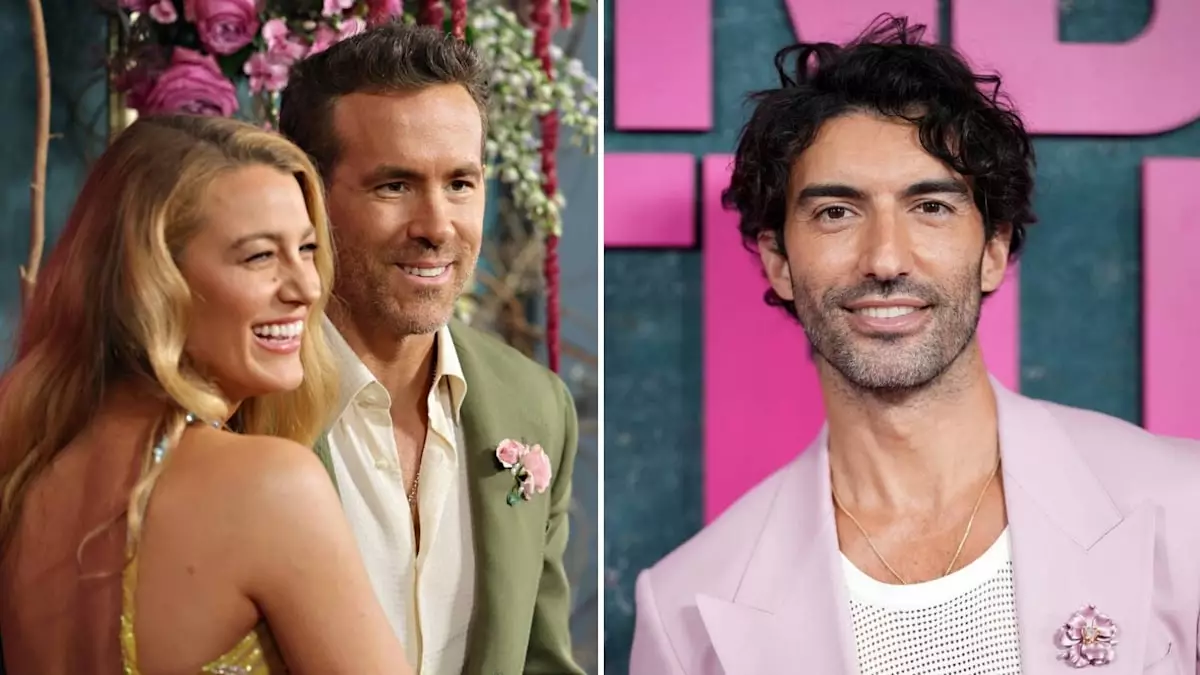The legal struggle between actor Justin Baldoni and the renowned couple, Blake Lively and Ryan Reynolds, has recently intensified, capturing significant media attention. As this high-profile litigation unfolds, a series of documents has emerged from Baldoni’s team, shedding light on the complex dynamics at play and igniting discussions about responsibility and accountability within the entertainment industry.
On February 1, Justin Baldoni’s legal team launched a website titled “Lawsuit Info,” which includes two detailed PDFs: an “Amended Complaint” and a “Timeline of Relevant Events.” The former outlines Baldoni’s lawsuit against Lively, Reynolds, their public relations team, and even the New York Times. This move can be seen as a strategic effort by Baldoni’s team to inform the public of their allegations while simultaneously shaping the narrative surrounding the lawsuit. This is not just a legal battle; it’s a battle for public perception.
The “Timeline of Relevant Events” spans from January 2019, when Baldoni first reached out to Colleen Hoover regarding the adaptation of her novel “It Ends With Us,” to the lawsuit’s filing date of January 29, 2025. Within this extensive timeline, Baldoni alleges that there was a concerted effort between Lively, Reynolds, and the New York Times to create an exposé on him, indicating that this friction has existed for years and raises questions about the ethics of collaboration and competition in the industry.
A major turning point in this saga involves a series of alleged text conversations between Baldoni and Lively, as well as between Baldoni and Reynolds. These exchanges are pivotal in understanding the perceived feud that has been publicly dissected by various media outlets. The alleged conversations indicate a façade of mutual respect that may mask underlying tensions. An intriguing aspect of the timeline is the documented media coverage claiming a rift between co-stars, which raises questions about narrative control and the impact of public perception on personal relationships in Hollywood.
Events outlined also suggest that Lively and Reynolds drafted a statement urging Baldoni to accept responsibility for the film’s negative publicity. The drafted statement presents a deeply apologetic tone, with Lively and Reynolds taking ownership of their involvement in the production challenges and assuring their commitment to professionalism throughout the project.
This approach points to a significant shift in the dialogue surrounding accountability in the film industry, showcasing how artists navigate the complexities of a collaborative environment that can quickly turn hostile. Rather than allowing the narrative of blame to dominate, the statement emphasizes mutual responsibility, highlighting an interesting pivot toward collective ownership of mistakes—a stark contrast to the often individualistic blame culture prevalent in Hollywood.
The Implications of the Legal Proceedings
Coming on the heels of ongoing developments in this legal dispute, it is vital to consider the broader repercussions this case may have within the film industry, particularly regarding the treatment of individuals involved in movie productions. As the court date approaches on March 9, 2026, industry insiders and audiences alike will likely be watching closely how these events unfold.
Legal dramas such as this often serve as case studies on how public personas manage conflict and take accountability. As the court proceedings evolve, they may well serve as a catalyst for reforming practices related to transparency and communication among creative teams in the entertainment sector.
This lawsuit is not merely a fight for legal vindication but also an expression of the increasingly public stakes involved in Hollywood’s production dynamics. The ongoing media scrutiny surrounding prominent figures makes such disputes less private, leading to questions about the moral responsibilities of not only the individuals involved but the industry as a whole.
In closing, the Justin Baldoni versus Blake Lively legal battle is emblematic of larger issues in Hollywood that illuminate the pressures faced by artists operating under the constant gaze of the public eye. While the court’s ruling will undoubtedly impact those directly involved, its implications may reverberate throughout the industry, prompting discussions on accountability, collaboration, and the ethics of celebrity culture.
